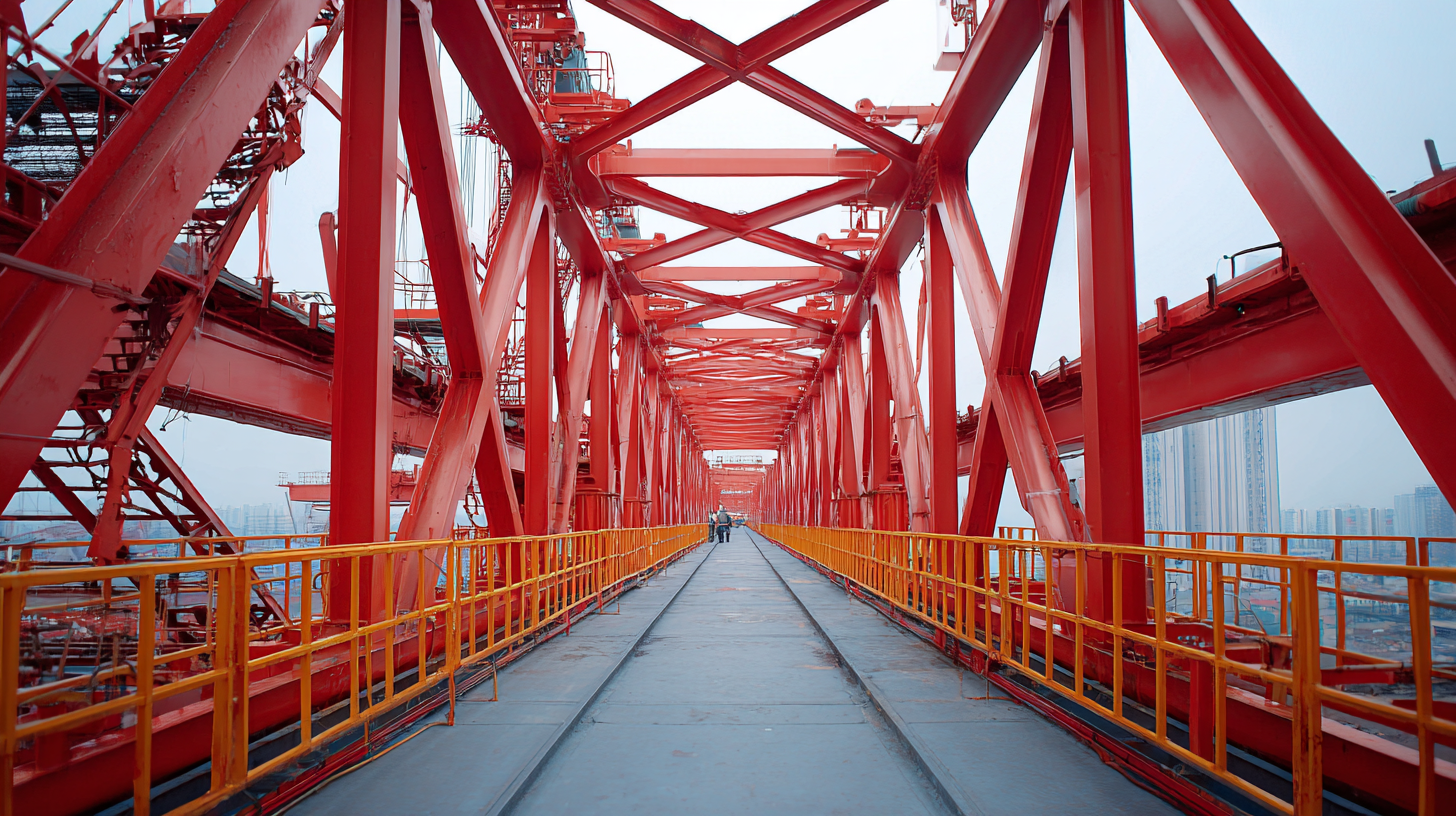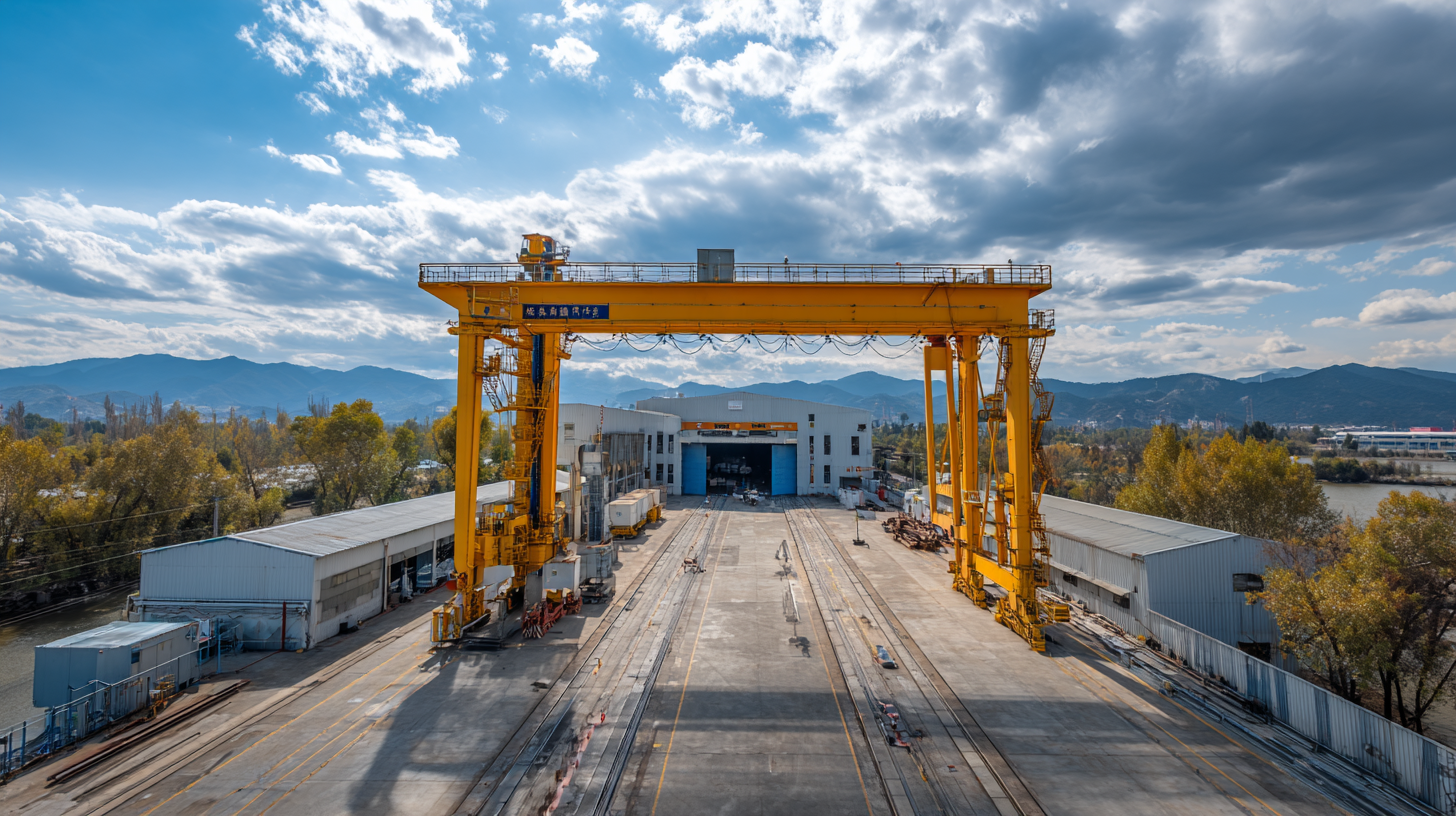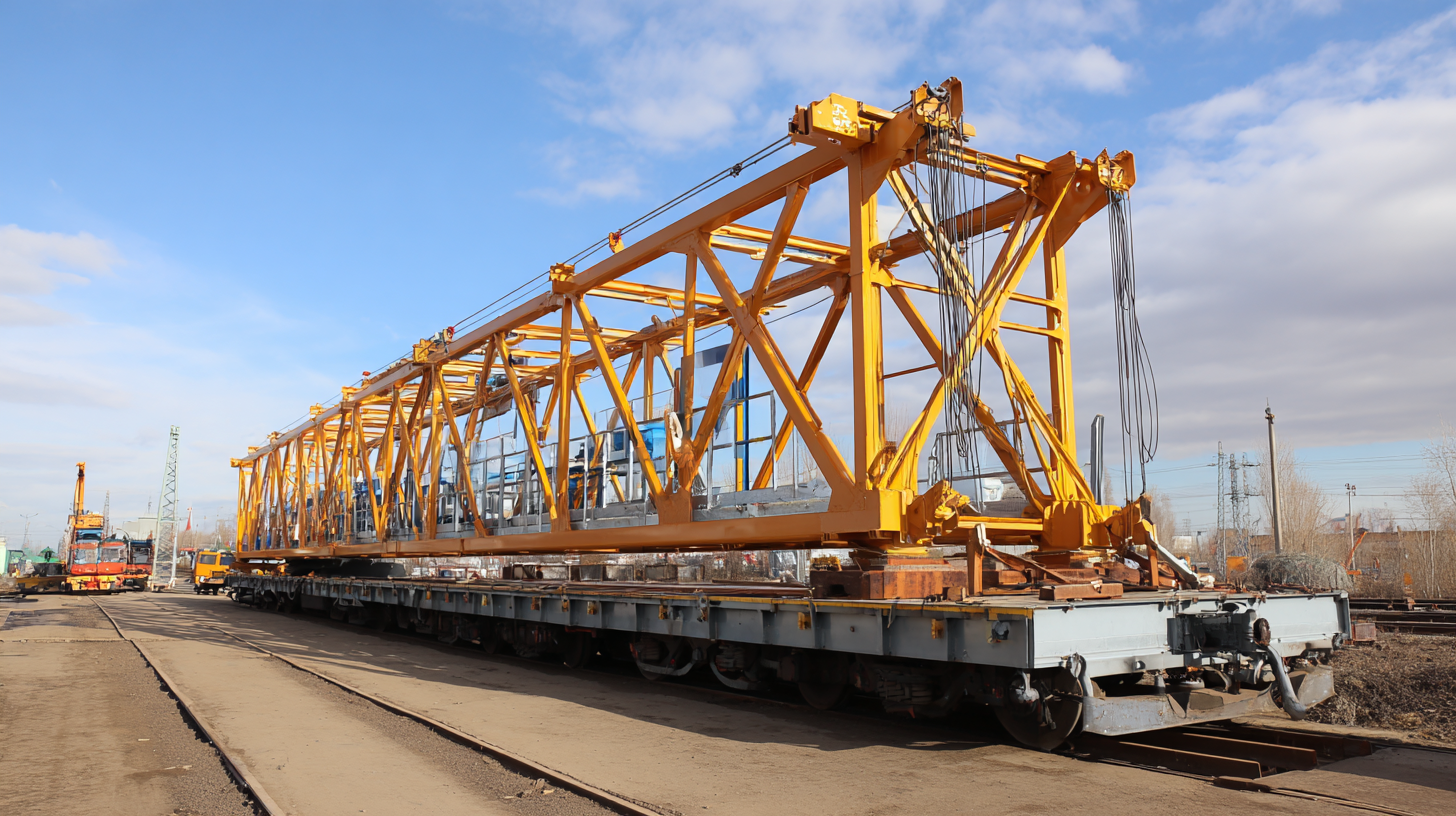Inquiry
Form loading...
-
Phone
-
Wechat

-
Whatsapp

The industry of Over Head Bridge Cranes is witnessing significant growth, driven by the increasing demand for material handling solutions across various sectors. According to a recent report by Market Research Future, the global overhead crane market is expected to reach USD 4.9 billion by 2025, growing at a CAGR of 5.2%. This surge not only highlights the importance of investing in high-quality overhead bridge cranes but also emphasizes the necessity for manufacturers and distributors to comply with a variety of export certifications to ensure safety and reliability.

Understanding these certifications is crucial for businesses looking to thrive in the competitive landscape, as they can enhance product credibility and open doors to international markets. In this comprehensive guide, we will explore the key export certifications pertinent to Over Head Bridge Cranes, equipping you with the knowledge needed to master compliance and maximize your operational success.
Understanding export certifications is crucial for businesses involved in the overhead bridge crane industry. These certifications not only ensure compliance with international safety standards but also enhance market access and customer trust. According to a report by Grand View Research, the global overhead cranes market size was valued at approximately $3.6 billion in 2020 and is expected to grow significantly, driven by industries recognizing the need for compliant and safe lifting solutions. Proper certification expedites this growth by providing credible proof of quality and safety, which are vital for projects in industries such as construction, manufacturing, and logistics.

Furthermore, adhering to export certification requirements can help mitigate risks associated with non-compliance, which can lead to expensive fines and reputational damage. The American National Standards Institute (ANSI) points out that cranes need to comply with stringent safety regulations, including those set by OSHA and ASME, to operate in various countries. For example, the European Union's Machinery Directive mandates that cranes must meet specific performance and safety standards to be marketed in EU member states. Achieving these certifications not only demonstrates a commitment to quality but also positions manufacturers favorably in an increasingly competitive global market.
When engaging in the export of overhead bridge cranes, understanding the essential export documents is critical for ensuring a smooth transaction. Firstly, a commercial invoice is paramount as it provides a detailed breakdown of the transaction between the buyer and seller. This document includes crucial information such as the description of the crane, its value, and the terms of sale. Use precise language to avoid misunderstandings and make sure it aligns with other documentation required by customs authorities.
Another key document is the bill of lading, which serves as a receipt of shipment and a document of title. It outlines the logistics involved in transporting the crane to its destination. In some cases, an export declaration may also be necessary, especially if the crane meets specific criteria that requires government oversight. Lastly, any relevant certificates of origin or compliance must be prepared to verify that the crane meets the necessary safety and regulatory standards in both the exporting and importing countries. Having all these documents meticulously prepared will significantly facilitate the export process, helping businesses avoid delays and penalties.
Navigating compliance regulations for the international trade of cranes can be a complex endeavor. Companies looking to export overhead bridge cranes must familiarize themselves with a myriad of standards and certifications that govern safety, environmental impact, and operational efficiency. Each country has its own set of regulations, and failure to comply can lead to delays, financial penalties, and even a complete halt of business operations. Understanding these regulations is not just about legal compliance; it also plays a crucial role in building a trustworthy reputation in global markets.
One of the key aspects of compliance is ensuring that all export certifications are in place before the crane's delivery. This includes obtaining necessary documentation such as CE marking in Europe or ASME certification in the United States. These certifications validate that the cranes meet the stringent safety and quality standards required for operation in different regions. Additionally, businesses must stay updated with any changes in international regulations, as these can significantly affect trade and operational capabilities. By mastering the intricacies of export certifications, companies can streamline their processes and foster smoother international transactions.

When exporting overhead bridge cranes, ensuring quality and safety is paramount. The complex nature of crane systems requires strict adherence to international standards and regulations. Proper certifications not only enhance reliability but also instill confidence in end-users. Integrating best practices in the certification process can simplify compliance and improve overall export success.
**Tip:** Before initiating the export process, conduct a thorough review of the certification requirements specific to the destination country. Familiarizing yourself with local regulations can prevent costly delays and streamline your operations.
Additionally, it's essential to carry out comprehensive quality inspections during the manufacturing phase. Engaging third-party inspectors can provide an unbiased assessment of compliance with safety standards. This proactive approach protects your brand's reputation and ensures that the cranes meet the necessary specifications.
**Tip:** Establish a robust documentation system for all inspections and certifications. This creates a transparent trail of accountability that can be invaluable during inspections by regulatory authorities and can ease the certification process.
As the global market for overhead bridge cranes continues to expand, understanding future trends in export certification becomes critical for manufacturers and industry stakeholders. According to a recent report by Research and Markets, the overhead crane market is projected to grow at a CAGR of 5.1% from 2023 to 2030, driven largely by advancements in automation and smart technologies. This evolution invites a shift in certification standards that prioritize not only safety but also environmental sustainability.
One prominent trend is the increasing emphasis on compliance with international standards such as ISO 9001 and ISO 14001. Companies that adopt these standards are seen as more competitive in global markets. Furthermore, the World Trade Organization indicates that trade compliance regulations are becoming more stringent, particularly regarding sustainability and emissions. As a result, manufacturers are encouraged to integrate eco-friendly practices into their production processes, ensuring they meet the evolving requirements of export certifications. This proactive approach not only facilitates smoother exports but also enhances brand reputation and market access.
| Certification Type | Issuing Authority | Purpose | Market Region | Validity Period |
|---|---|---|---|---|
| ISO 9001 | International Organization for Standardization | Quality Management Systems | Global | 3 years |
| CE Marking | European Union | Compliance with EU safety standards | European Economic Area | Indefinite (subject to ongoing compliance) |
| UL Listing | Underwriters Laboratories | Safety Standards | North America | 3 years |
| ASME Certification | American Society of Mechanical Engineers | Pressure Vessel Safety | United States | Indefinite (subject to renewal) |
| ISO 14001 | International Organization for Standardization | Environmental Management Systems | Global | 3 years |
